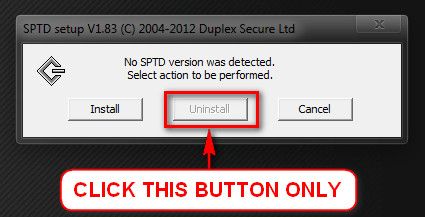New
#41
BSOD Analysis:
Code:BugCheck 3B, {c0000005, fffff880010123fa, fffff88009032980, 0} *** WARNING: Unable to verify timestamp for MpFilter.sys *** ERROR: Module load completed but symbols could not be loaded for MpFilter.sys Probably caused by : MpFilter.sys ( MpFilter+123fa )Code:Usual causes: System service, Device driver, graphics driver, memoryCode:3: kd> !thread GetPointerFromAddress: unable to read from fffff80003311000 THREAD fffffa8007f1b2c0 Cid 0bc8.0bcc Teb: 000007fffffde000 Win32Thread: 0000000000000000 RUNNING on processor 3 IRP List: Unable to read nt!_IRP @ fffffa8005f69850 Not impersonating GetUlongFromAddress: unable to read from fffff80003250ba4 Owning Process fffffa8007f1cb30 Image: WmiPrvSE.exe Attached Process N/A Image: N/A fffff78000000000: Unable to get shared data Wait Start TickCount 2982 Context Switch Count 40 IdealProcessor: 0 ReadMemory error: Cannot get nt!KeMaximumIncrement value. UserTime 00:00:00.000 KernelTime 00:00:00.000 Win32 Start Address 0x00000000ffb7a9b4 Stack Init fffff88009033db0 Current fffff88009032bb0 Base fffff88009034000 Limit fffff8800902e000 Call 0 Priority 9 BasePriority 8 UnusualBoost 0 ForegroundBoost 0 IoPriority 2 PagePriority 5I wasn't able to find much conclusive information from the dump file, but I've managed to gather some further evidence to support the Stop 0xC9 by Driver Verifier, there is a few function calls related to I/O and Device Drivers.Code:fffff880`090339a8 fffff800`033d7b76 nt!ObOpenObjectByName+0x306 fffff880`09033a08 fffff800`033d3e2a nt!NtAllocateVirtualMemory+0x134a fffff880`09033a78 fffff800`033d947c nt!IopCreateFile+0x2bc fffff880`09033ab8 fffff800`030e61f8 nt!MmAccessFault+0x3d8 fffff880`09033b18 fffff800`033c3a84 nt!NtOpenFile+0x58
Looking at your .Arn file, and the Drivers tab, I managed to find this:
Remove:
Daemon Tools uses a driver called sptd.sys and dtsoftbus01.sys, which is known to cause BSODs with Windows 7. It is recommend you remove this program, and use Windows own in-built features or ImgBurn.Code:Start Menu\Programs\DAEMON Tools Lite
Infrd960.sys seems to related to your IBM ServeRAID Controller Driver and dated as 06/06/2006, it's very unlikely to be compatible so I suggest removing the driver completely. Are you running a RAID configuration, I've noticed quite a few RAID drivers.
agrsm64.sys seems to be related to AgereSoftModem (part of LSI Logic) and unlikely to be compatible with Windows 7 since it is dated as 10/11/2008, I would either check for any updates or remove the driver completely.
adp94xx.sys related to Adaptec Windows SAS/SATA Storport Driver is dated as 05/12/2008, and again unlikely to be compatible with Windows 7, please check for updates or remove the driver completely from your system. Support Page - Adaptec - Technical Support
There's a few other drivers dated from 2009, but I would firstly check the HP Support Site for your model for any updates. Check for all the drivers apart from the Intel graphics.



 Quote
Quote